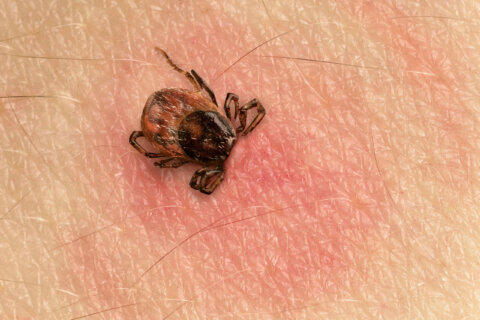Infections and diseases associated with sex make many people uneasy.
How would you feel about being diagnosed with a sexually transmitted disease or infection such as chlamydia or human papillomavirus? Though such infections are common and occur through routine sexual contact, many people who are diagnosed experience confusion and shame, says Fred Wyand, director of communications for the American Sexual Health Association, a nonprofit that promotes the sexual health of individuals, families and communities. The Centers for Disease Control and Prevention estimates that nearly 20 million new infections occur every year. Many cases of gonorrhea, chlamydia and syphilis go undiagnosed, and other STDs, like the herpes simplex virus, aren’t routinely reported, according to the CDC. The fact such diseases and infections are associated with sexual behavior makes many people anxious, Wyand says. “If it involves s-e-x, there’s a likelihood someone will be uncomfortable with it,” he says. “It’s hard to talk about sex and difficult to discuss STDs for what they are — common infections that can affect anyone who has sex.”
Many people have an STD and don’t know it.
HPV is the most common sexually transmitted infection in the U.S., infecting about 79 million people in the country, the CDC says. About 80 percent of sexually active people are infected with HPV at some point in their lives, according to the Cleveland Clinic. Half of all infections are in young people under age 25, Wyand says. The infection is most commonly spread during vaginal or anal sex, and anyone who is sexually active can get the STI. In most cases, HPV goes away on its own and causes no health problems. There are dozens of strains of HPV, and some of them can lead to cervical cancer. Other types of HPV can also cause genital warts in men and women. “There’s a lot of confusion about who gets STDs and STIs and why,” Wyand says. “Do you know what you are if you have an STD? You’re normal. And it should be as easy to initiate a conversation about STDs or STIs as it is to talk about cholesterol.” To overcome the stigma associated with sexually transmitted diseases and infections, experts recommend these six strategies:
Educate yourself.
If you’ve just found out that you have an STD, it is common to feel like you are alone, says Anita Gadhia-Smith, a psychotherapist who practices in suburban Maryland and the District of Columbia. “The first thing you should do is to educate yourself thoroughly about the condition,” she says. You’ll learn that you are far from alone, that tens millions of people deal with STDs, and that most such infections are highly treatable, she says. Learning these facts will help you put the news into context and avoid catastrophizing it. “The vast majority of people with STDs go on to live normal lives and can have healthy sexual relationships,” she says.
Consider joining a support group.
There are a number of support groups in different parts of the country for people with an STD or an STI. Support groups can provide information, such as treatment options and give you the opportunity to share your thoughts and anxieties with others facing similar challenges, Gadhia-Smith says. If you’re reluctant to join an old-school support group, online groups are available. “Many people prefer the online support group format because of the privacy and anonymity they afford,” Gadhia-Smith says. On its website, the ASHA lists contact information for support groups in 10 states. The website stdaware.com also provides links that can help you find support groups online or in real life. These groups focus on an array of conditions, including herpes, HIV, chlamydia and syphilis.
Don’t keep your feelings to yourself.
“When feelings of shame come up, the tendency is to keep them a secret and not talk about what’s really going on,” Gadhia-Smith says. “The problem with secrets is that they create more shame, and then shame starts building upon itself.” People are only as sick as their secrets, she says. Gadhia-Smith recommends talking about your medical condition on a “need to know” basis. “When you’re deciding who to talk to, choose wisely,” she says. “You don’t need to talk with everyone you know. A very close and trusted friend, a close family member, a therapist or your doctor are good people to discuss personal issues about STDs.”
Get rid of friends and acquaintances who shame you for having an STD.
If any relatives or friends shame you for having an STD or an STI, “prune them like you would dead branches from a live tree,” says April Masini, who dispenses relationship counsel on her online “Ask April” advice forum at RelationshipAdviceForum.com. “You don’t need them. They are making you feel badly about a real-life situation. That’s not friendship. And the reality is that anyone who shames you for this situation is going to or already has shamed you for other situations. Good riddance.”
If you’re dating, consider a match service for people with STDs.
Dating after you’ve been diagnosed with an STD or an STI can be awkward and challenging. Joining a dating service for people who have the same condition as you puts you on common ground and removes some of the awkwardness of talking about your diagnosis, Gadhia-Smith says. “If you meet someone on such a dating site, there’s a comfort level in your shared situation,” she says. There are a number of dating sites for people who are living with an STD or an STI. For example, on positivesingles.com you can search for possible matches who are living with different strains of herpes, HPV, HIV, chlamydia, syphilis and other infections.
6. If you meet someone new, disclose your status in a timely fashion.
Knowing when to disclose the fact you’re living with an STD to a potential romantic interest can be tricky, Masini says. She recommends doing so “somewhere around the second or third date — long before you sleep with or become too sexually involved with someone,” she advises. “Bring it up during coffee, not while you’re drinking alcoholic beverages, with all your clothes on, far from the bedroom and during the daytime,” she says. “This gives you the opportunity to be honest and upfront that you care about this person. It also gives him or her the chance to decide whether to continue with you. If a partner is angry or scared by your disclosure, and doesn’t want to keep seeing you, be OK with that. You gave [him or her] a choice and they took it. If you’re worried about rejection, disclose earlier to cut your possible losses.”
More from U.S. News
10 Ways to Broach the Subject of Sex With Your Teen
What Only Your Partner Knows About Your Health
Are Teens Rejecting Risky Behavior?
6 Strategies for Breaking the Stigma of Living With an STD originally appeared on usnews.com







